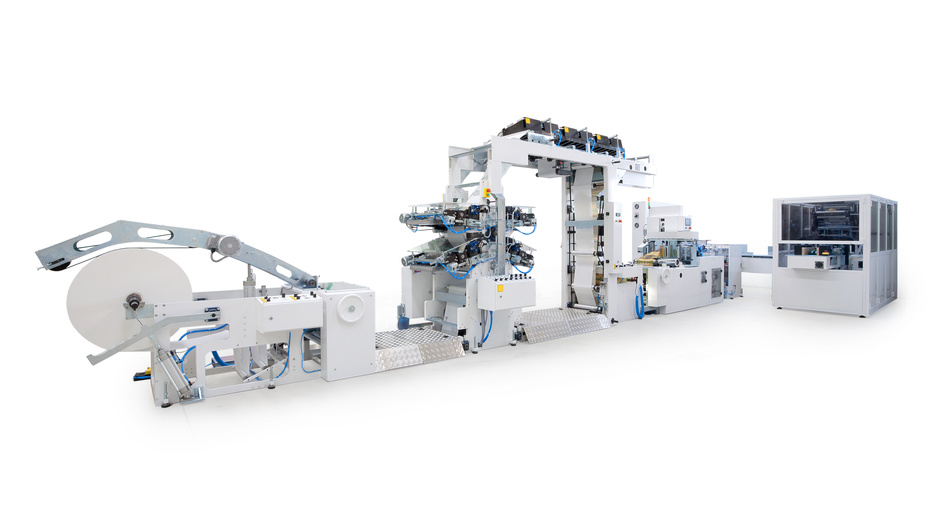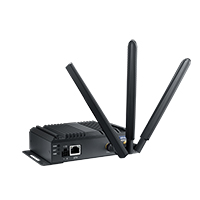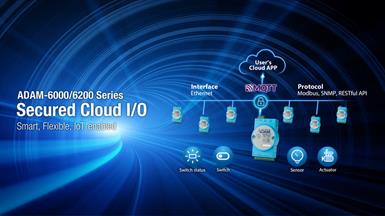Advantech LoRaWAN Solution for Machine Condition Monitoring
28/09/2017
Challenge
OEE is a widely used standard and best practice for improving productivity in manufacturing, accounting for three primary factors: availability, performance, and quality. Since a machine’s condition has a major impact on these factors, most plant owners invest a considerable amount of finances and human resources into maximizing machine uptimes. Monitoring and measuring basic parameters in and around valuable equipment can prolong the equipment’s lifetime while reducing maintenance costs and allowing for strategic downtime scheduling.
However, having to manually check the status of each machine in a production line is a time-consuming task that requires extra person-hours. Additionally, many machines are installed in locations where wired data communication and AC power are inaccessible or impractical. Advantech LoRaWAN low-power wireless solution is designed specifically to overcome these problems by extending the network edge

Solution

Advantech Wzzard LRPv LoRaWAN nodes are placed in the remote areas and connected to sensors such as those for monitoring vibrations, wireless tower lights, current, and temperature. The nodes transmit sensor data via LoRaWAN, a wireless telecommunication specification, to a WISE-6610 LoRaWAN gateway in the control center.
Since a single control center might be responsible for monitoring multiple sites, a switch can facilitate collecting and organizing data from many WISE-6610 LoRaWAN gateways prior to passing the data to a PC.
With sufficient sensor data, the system can alert staff both in and out of the office, activate redundancy plans, and determine why production goals are missed in the event of a failure.
Features, Advantages and Benefits

LoRaWAN Wireless Network Technology
LoRaWAN is a proprietary chirp spread spectrum radio modulation technique for use in a low-power wide-area network (LPWAN). It is a WAN specification designed to enable long-range, low-bit-rate communication among “things” (i.e., connected objects) such as battery-powered sensors, and it uses license-free sub-GHz radio-frequency bands such as 196, 433, and 868 Mhz in Europe and 915 MHz in North America. An LPWAN may be used to create a wireless sensor network or a third-party service or infrastructure.
The Wzzard LRPv LoRaWAN node and WISE-6610 LoRaWAN gateway support wireless long-range network communication without the need to pay telecommunication fees, thus reducing network operating costs considerably. This is particularly pertinent for reducing the cost of flood monitoring because most water bodies are large and do not have control centers located near them. Furthermore, traditional wireless solutions (e.g., access points) have a limited data transmission range and thus force users to adopt an intensive approach to node deployment. Even though cellular routers are unaffected by such problems, they require paying telecommunication fees.
3AI/1DI for Multiple Sensors and Customized Software Modules for Various Applications
Advantech’s Wzzard LRPv LoRaWAN node can connect up to four sensors simultaneously and is ideal for production lines that have many sensors or for applications where there is limited space for additional devices. The software is specifically designed to be customizable so as to accommodate the most sophisticated of monitoring plans.
Because the Wzzard LRPv LoRaWAN node offers high flexibility in both hardware and software aspects, it frees users from having to deploy an infrastructure-heavy wireless network, meaning that resources can be allocated to other more critical investments.
Dual Power-Saving Mode and Alarm System
The Wzzard LRPv LoRaWAN node has two power-saving modes: sleep mode (for when a node is not in use) and operation mode (for scheduled data transmissions). For instance, if a node were scheduled to report sensor data twice per hour, then sleep mode would automatically activate when the node is not in use, and operation mode would wake the node when the data must be transmitted, thus achieving the goal of energy efficiency. An alarm system is installed to notify users when a value has exceeded a given threshold. For example, when a flood or storm is approaching, it brings in a tremendous amount of water; in this case, the alarm system will notify users when water levels have exceeded a certain level so that disaster prevention measures can be implemented.
Thus, the smart design of the power-saving modes and alarm system reduces costs by saving power while promoting safety by notifying users when emergent action should be taken.
Conclusion
Product Information

- Rugged, IP66-rated, fiber-reinforced polyester PBT enclosure
- Ultra low power consumption with battery and external power input (3.7 ~ 12 V)
- Industrial-grade with a wide operating temperature range (-40 ~ 75 °C)

- Existing software user modules plus fully supported application development gives more customization options for users
- Low power consumption
- Industrial-grade with a wide operating temperature range (-40 ~ 75 °C)
- Supports IoT protocols



/Wzzard_Slope _S20190430013653.jpg)
